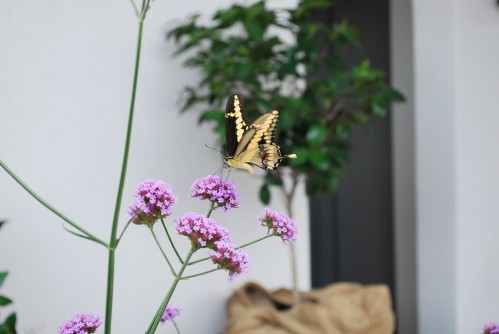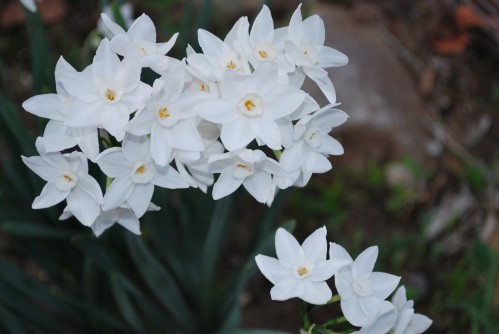 Greetings to you all, and wishing you the very best in 2014! It is only natural this time of year to reflect on the fruits of the past year, as well as plan and dream for the year ahead. Consider gratitude as a foundation for your coming year.
Greetings to you all, and wishing you the very best in 2014! It is only natural this time of year to reflect on the fruits of the past year, as well as plan and dream for the year ahead. Consider gratitude as a foundation for your coming year.
One of the blogs I follow, Liz Denney Sanders of She Brand, had a wonderful gratitude post around Thanksgiving which included her top 10 gratitude quotes, More Gratitude Less Attitude. When I think about gratitude I attribute Oprah and Sarah Ban Breathnach as two people who brought gratitude awareness to the forefront and they are included in this top 10 gratitude quote list, too.
Dream big, and write your dreams down. It is said that the simple act of writing dreams down and looking at this list of dreams frequently--starts the momentum. What have you got to lose. Learn something new and exciting this year. The wonderment of learning engages us in life. List some adventures you have always wanted to do, and don't be afraid to go out of your comfort zone.
There are many highlights for me in 2013, becoming an author is a big one, and having the opportunity to meet two of my favorite authors who have inspired me in my life, Alice Waters and Patricia Wells are two others. I embrace the small highlights, as well as the big highlights. Having a healthy "cooing" flock of hens makes my heart sing.
For those that live in San Diego County, it has been very sad to hear of Loren Nancarrow's passing, a well-known San Diego TV anchor, and a garden enthusiast and advocate. He touched our lives in so many ways. He will be greatly missed.
Wishing you a very happy and exciting 2014! I am excited to share with you more garden living through writings, tips, photography, recipes, and styling. This is a quote that I just love, that I saw this year which has stayed with me. I am not sure of the author. "Make Everyday Your Masterpiece."

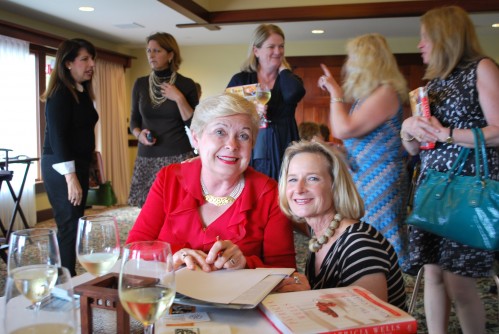
 has a new cookbook out,
has a new cookbook out,  . Last weekend, Owner and Founder, Susan McBeth's
. Last weekend, Owner and Founder, Susan McBeth's 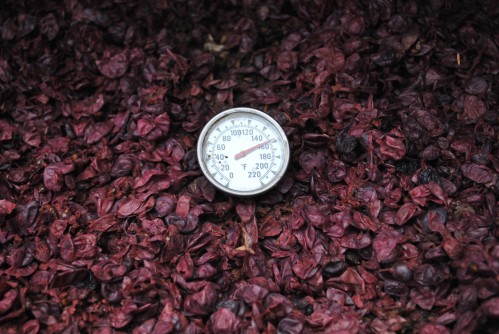 I'm a firm believer in backyard composting. I love the idea of recycling what you have from your own garden, property, and kitchen scrapes into your own personal compost recipe. It is especially important to compost when you have backyard chickens. In fact, I really delve into this subject of backyard composting and backyard chickens in my book,
I'm a firm believer in backyard composting. I love the idea of recycling what you have from your own garden, property, and kitchen scrapes into your own personal compost recipe. It is especially important to compost when you have backyard chickens. In fact, I really delve into this subject of backyard composting and backyard chickens in my book, 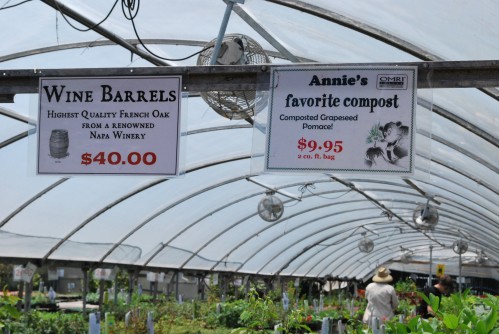
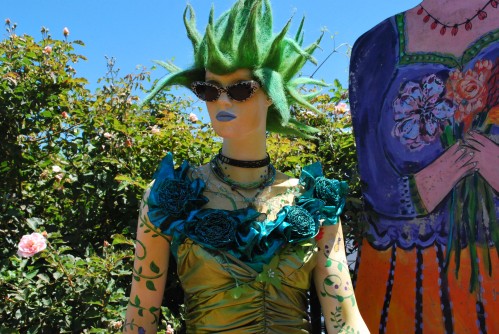
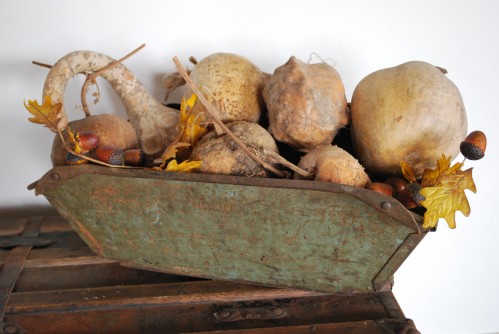 There is nothing like a vintage container with a beautiful "warn and warm" hue to fill for a simple autumn display. This is some sort of vintage bucket, which is big, and can be re-purposed for all kinds of objects that remind you of fall. I found the bucket on a whim at
There is nothing like a vintage container with a beautiful "warn and warm" hue to fill for a simple autumn display. This is some sort of vintage bucket, which is big, and can be re-purposed for all kinds of objects that remind you of fall. I found the bucket on a whim at 


 Here at Domaine de Manion we are especially grateful for the family and friends who help us harvest the grapes from the vines, sort the grapes before crushing, and share a delightful dish. This year, we had a bit of a heat wave right before our intended harvest, and so had to scramble and bring the grapes in a week earlier. We had a record yield of 860 pounds of beautiful fruit clusters which reached a desired 25.5 brix, or sugar percentage.
Here at Domaine de Manion we are especially grateful for the family and friends who help us harvest the grapes from the vines, sort the grapes before crushing, and share a delightful dish. This year, we had a bit of a heat wave right before our intended harvest, and so had to scramble and bring the grapes in a week earlier. We had a record yield of 860 pounds of beautiful fruit clusters which reached a desired 25.5 brix, or sugar percentage.
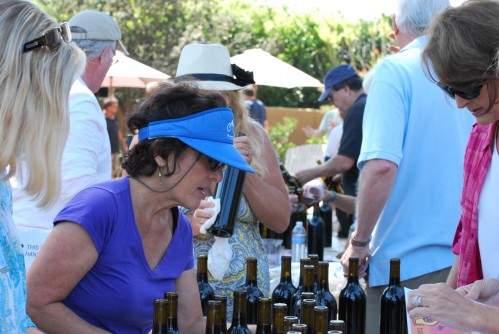
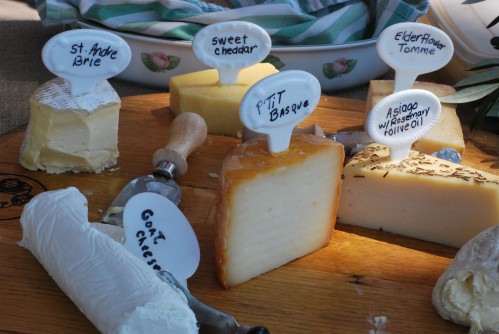

 George Adams is not only the author, he is an artist including his pen and ink drawings, and contributing colorful photography, too.
George Adams is not only the author, he is an artist including his pen and ink drawings, and contributing colorful photography, too. Pat Leuchtman is one of my garden writing friends and blogs at
Pat Leuchtman is one of my garden writing friends and blogs at 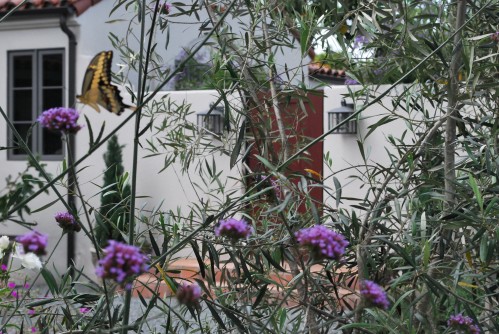 My new favorite perennial plant is Verbena bonariensis, also known as Purpletop Vervain. I planted it in mass on one side of my courtyard next to my olive trees and white iceberg roses, and I have really been enjoying it. It is very low maintenance with high "plant appeal."
My new favorite perennial plant is Verbena bonariensis, also known as Purpletop Vervain. I planted it in mass on one side of my courtyard next to my olive trees and white iceberg roses, and I have really been enjoying it. It is very low maintenance with high "plant appeal."